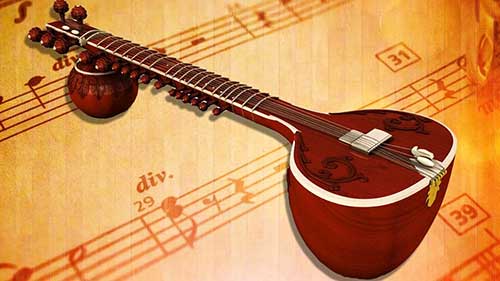Indian Scientific Music: Rasa, Bhava and Ragas – Score Short Reads
After gaining a basic understanding the alphabet of Music – the Saptaswara (The 7 musical notes), it is necessary to understand that music as a language is for the expression of emotions.
In Sanskrit, the emotion is called as Bhava. Bhava is the state of mind. It is abstract. A Bhava cannot be explained by words. Words only help to manifest the Bhava. Happiness is a Bhava. Happiness itself cannot be defined with words, but happiness manifests itself in expression to become laughter or a smile.
Rasa which literally translates to juice or essence is the expression of Bhava or the manifestation of a Bhava through the body is called a Rasa.
As described by Bharatamuni, there are 8 Stayi Bhavas or Major Emotions. The 8 Emotions are
- Rati (Love)
- Hasya (Amusement/Extreme Happiness)
- Shoka (Sorrow/Sadness)
- Krodha (Anger)
- Utsaha (Energy/Excitement)
- Bhaya (Terror)
- Jugupsa (Disgust)
- Vismaya (Astonishment)
The 8 Rasa corresponding to the aforementioned Bhava are as follows
- Shrungarah: Beauty, Romance – Rati Bhava. It can be seen that Romance or beauty is the expression of Love Lord Vishnu is the presiding deity of the Rasa. The Lush green colour signifies the Rasa
- Hasyam: Laughter – Hasya Bhava. Laughter is the expression of Happiness or amusement. The purity of happiness is expressed through White as the colour with Shiva being the presiding deity
- Karunyam: Compassion (at times tears) – Shoka Bhava. Compassion is the manifestation of sadness in the physical realm. The Lord of Death – Yama is the presiding deity and Grey is the colour of compassion.
- Raudram: Fury – Krodha Bhava. Fury is the expression of Anger. Red is the colour of anger and Shiva is the presiding deity of the Raudra Rasa
- Veeram: Heroism or Courageousness is the manifestation of Utsaha Bhava. The king of the Devas Lord Indra is the presiding deity and is expressed as Saffron as a colour.
- Bhayanakam: Fear is expressed as a consequence to Bhaya Bhava or Terror. Again, the Lord of death, Yama is the preceding deity of the Rasa while Black is the colour used for expressions of fear.
- Bibhastam: Aversion is the response to the Jugupsa Bhava or the emotion of disgust. Shiva is the presiding deity of the Rasa while it is expressed by using a deep hue of blue
- Adbhutam: Amazement or Surprise is the manifestation of Vismaya Bhava the emotion of Astonishment. Brahma the Creator is the presiding Deity and is expressed by the colour Yellow
The ninth Rasa “Shantam” was added by scholars after a careful studying.
- Shantam: Peace or Tranquillity. Lord Vishnu is the presiding deity and is expressed by using the colour of Clear White
In Music, with the help of the seven notes, we may be able to create the manifestation of these emotions. The musical tool used for the same is called as a Raga.
A Raga is a collection of notes in a specific order, in ascending as well as descending which have the capability to create or enhance a specific mood.
The Ascending scale of the notes of a Raga is called as Aaroh and the Descending is called as Avaroh. The Aaroh and Avaroh describe the structure of the raga. Some more aspects of the raga are: Vadi-Samvadi (The conservationists), and Thaat (The Parent Scale)
A couple of Ragas with their mood are
- Raag Hamsadhwani: Invokes instant happiness. Hasyam
- Raag Gujari Todi: Expressing a mellow mood, Karunyam
I hope that you now have a brief understanding of Ragas.








